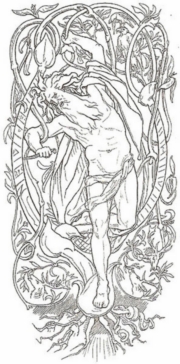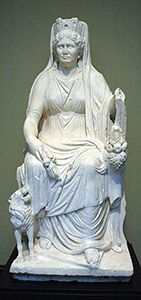 |
|||||||||||||
|
Sacrificial Gods Review "Sacrificial Gods".
"Great Mother of the Gods, also called Cybele, Cybebe, or Agdistis, ancient Oriental and Greco-Roman deity, known by a variety of local names; the name Cybele or Cybebe predominates in Greek and Roman literature from about the 5th century bc onward. Her full official Roman name was Mater Deum Magna Idaea (Great Idaean Mother of the Gods)... Her priests, the Galli, castrated themselves on entering her service. The self-mutilation was justified by the myth that her lover, the fertility god Attis, had emasculated himself under a pine tree, where he bled to death. At Cybele’s annual festival (March 15–27), a pine tree was cut and brought to her shrine, where it was honoured as a god and adorned with violets considered to have sprung from the blood of Attis. On March 24, the “Day of Blood,” her chief priest, the archigallus, drew blood from his arms and offered it to her to the music of cymbals, drums, and flutes, while the lower clergy whirled madly and slashed themselves to bespatter the altar and the sacred pine with their blood. On March 27 the silver statue of the goddess, with the sacred stone set in its head, was borne in procession and bathed in the Almo, a tributary of the Tiber River. Cybele’s ecstatic rites were at home and fully comprehensible in Asia, but they were too frenzied for Europeans farther west. Roman citizens were at first forbidden to take part in the ceremonies—a ban that was not removed until the time of the empire..." ~ from Great Mother of the Gods, Encyclopaedia Britannica.  "History records many dying-and-rising saviors. Examples from the Ancient Near East that preceded the Jesus story include Tammuz, Osiris, Dionysus, Adonis, Attis, and Baal." "History records many dying-and-rising saviors. Examples from the Ancient Near East that preceded the Jesus story include Tammuz, Osiris, Dionysus, Adonis, Attis, and Baal." ~Jesus: Just One More Dying and Rising Savior by Bob Seidensticker, April 2012, on the Patheos web site. Read more... |
| Copyright © Redefining the Sacred. All rights reserved. | |
